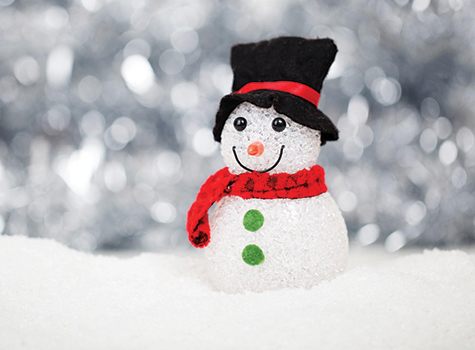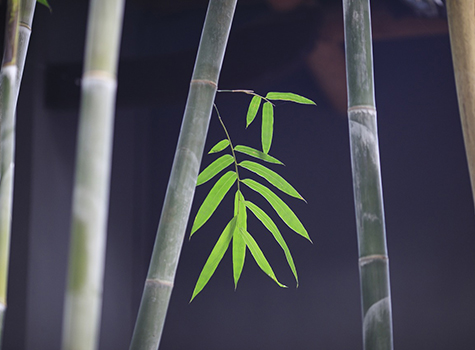By Preethi Sriram

The holiday season is here, and it is almost time for a New Year, so now feels the perfect time to reflect on the different holidays through the year. One of my favorite “traditional” holidays has been Halloween. I think the aspect that I have always liked about the holiday is that one can be something wildly different from oneself. It is very creative and does not even need to be complicated. A cone hat and a broom transform the wearer to a witch that can fly around for candy. A colorful wig now transforms the individual to a clown. A stethoscope from a play kit, and one is magically a nurse, the heroine Florence Nightingale. Black lines under the eyes could transform one to a football player.
Dance, costume, and makeup can transform the mundane into a grand show. The possibilities are endless. Orange pumpkins light up with eerie smiles, cackly recorded laughs, light shows of ghosts flying around a house abound the neighborhood. Something about the anticipation of a crisp autumn night, seeing all sorts of characters and spirts, souls and ghouls on the street sparks the imagination.
And who can forget the candy! That will last at least until the winter.
Another holiday that I have always felt a pull towards, even if I have not been personally brought up in it, is Dia de Los Muertos, a Mexican holiday. While I have not specifically celebrated Dia de Los Muertos, I have also enjoyed the concept of it, and learning about it as it seems to be celebrated close to the Halloween season. In general, I have always enjoyed the concept of celebrating our ancestors and have as a child always felt some sort of connection to Shiva. I think this is because Shiva never seemed scared but welcomed all sorts of spirits. Shiva is “a natural” and helps us to understand the cycle of life and is known for having a presence in cemeteries and helping in transcendence, and thus maybe I have also appreciated Dia de Los Muertos and having the ancestors around us and feeling they are close to us, be it through what they have left for us, beautiful architecture, sculptures, poetry, music, and dance.
From fall to winter, another holiday I have always enjoyed is Christmas. Growing up in the north, Christmas has always evoked for me sledding down snowy hills and playing in the snow.
Of course, time off from school always gave something to look forward to which almost every kid can appreciate. Christmas also is the holiday for giving to those who are needy and opening doors and hearts to those who may need it most. Sometimes, the best gift to get is the gift given to others. It is a holiday that teaches the joys of giving.
This also feels a time to reflect on some other “traditional” holidays. Deepavali or Diwali is a holiday that has always been special, with the thrill of being able to play with fire sparklers. Cary Diwali is something that I have attended and enjoy watching the performances of songs, dances, skits put on, as well as also performing in certain dances myself for Diwali.
I remember one year, it was a cold night, and they were playing music for everyone to come and dance on the stage. Obviously, I had to celebrate that night as if I would celebrate no other festival.
A big celebration that always stands out is Navratri, or the nine nights. This is the celebration for the Goddess. Different parts of India celebrate Navratri in unique ways. In the region that my family comes from, it is celebrated through having a “Golu” where different figurines are showcased, and guests can come enjoy this magnificent display. The display has themes related to the stories of the puranas of Shakthi Devi and the various forms of Shakthi. The display can have other themes as well of figures from the Mahabharata or Ramayana.
As I have had friends from Gujarat, Garba and Raas has been integral to the celebration of Navratri. In Garba, people dance around a circle with the idol of a Goddess in the center. People follow certain dance steps. While I proclaim no expertise in the dance itself, one step can be moving forward with two claps to the front and then one to the back.
This is done to music that can be live or recorded. Raas also uses sticks for dancing. People can dance with the sticks and tap the sticks together as they move down the line. “Tap both sticks to the Right/Tap Both Sticks to the Left/Strike the sticks of the partner in front you/and then tap both sticks to the front. Continue.”
There are more complicated variations that can be utilized, but this is something of a rhythmic pattern that is both soothing and energizing. While some may learn through physics classes that time is relative, the immersion into the celebration of Navaratri through Garba/Raas is another way to learn this. In the blink of the eye, or the clap of the hands, or in the tap of the sticks, the night comes to an end. Where did time go?
It seemed to dance with us around Shakthi Ma, but then danced away too. We must leave now- Time to go home and rest and recover. But tomorrow is another night- Eight more to go!
So, a thought for the holiday season and many more holidays to come: When one is enjoying the holiday, there is no separation of “my holiday” or “your holiday” but “our holiday” to learn, incorporate and be knowledgeable and joyous in the festivities. This is the true spirit of the holidays.
Preethi Sriram is a classical dance enthusiast and lifelong learner of dance. Contact: [email protected]



